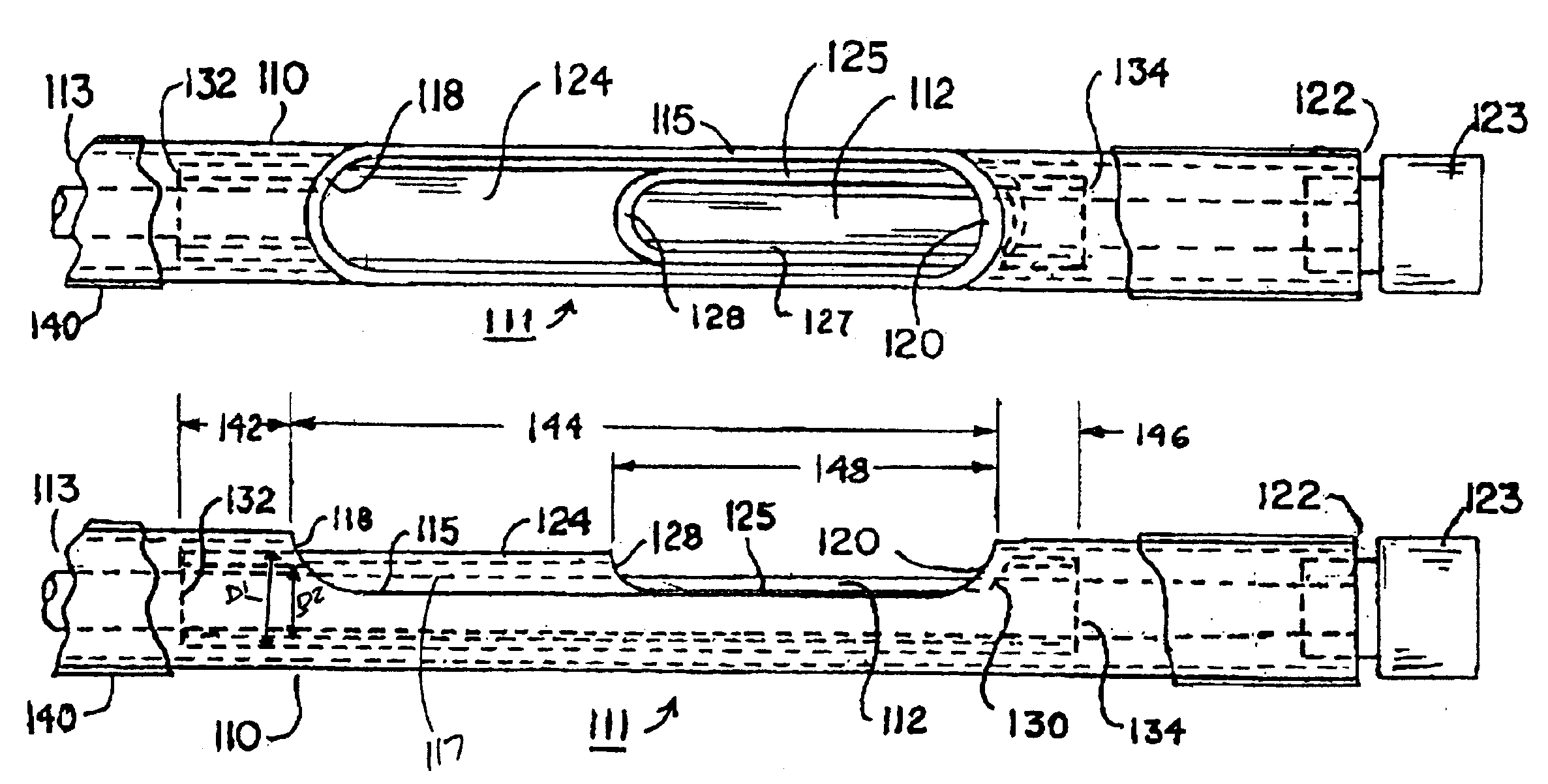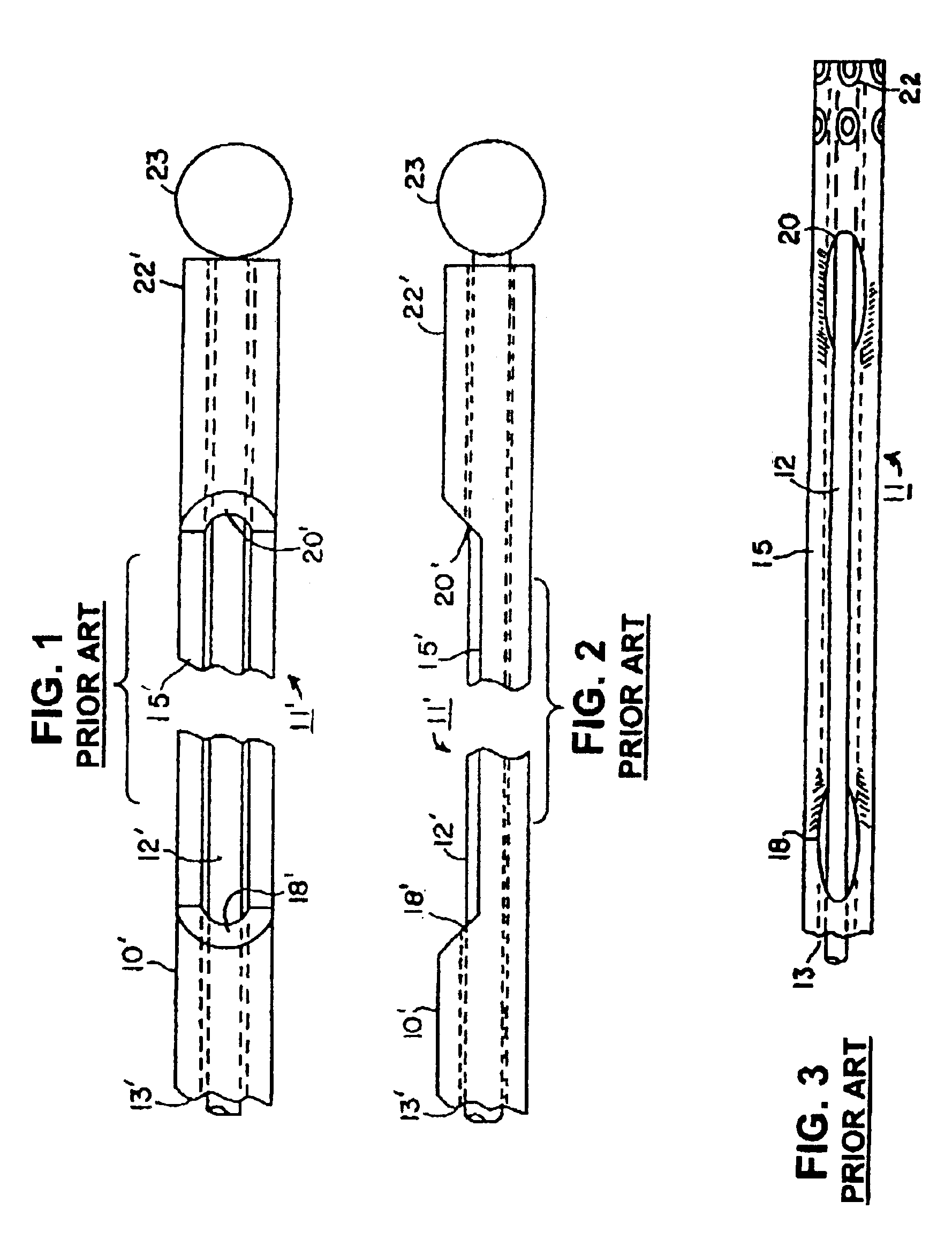Steerable medical device having means for imparting curves in the device and in elongated implantable medical instruments
- Summary
- Abstract
- Description
- Claims
- Application Information
AI Technical Summary
Benefits of technology
Problems solved by technology
Method used
Image
Examples
Embodiment Construction
[0046]In the following detailed description, references are made to illustrative embodiments for carrying out the invention. It is understood that other embodiments may be utilized without departing from the scope of the invention. Although the present invention is described as preferably being applied to a steerable stylet, the aspects of the present invention are not intended to be limited to use in steerable stylets. Rather, it is understood that the present invention could be utilized in elongated medical devices other than steerable stylets, such as sheaths or catheters, for example. The preferred embodiments of the steerable stylets of the present invention can be employed within the lumens of endocardial cardiac leads, particularly endocardial pacing and / or cardioversion / defibrillation leads, but it will be understood that the steerable stylets of present invention can be utilized in any elongated medical instruments of the types described or mentioned herein and equivalents ...
PUM
 Login to View More
Login to View More Abstract
Description
Claims
Application Information
 Login to View More
Login to View More - R&D
- Intellectual Property
- Life Sciences
- Materials
- Tech Scout
- Unparalleled Data Quality
- Higher Quality Content
- 60% Fewer Hallucinations
Browse by: Latest US Patents, China's latest patents, Technical Efficacy Thesaurus, Application Domain, Technology Topic, Popular Technical Reports.
© 2025 PatSnap. All rights reserved.Legal|Privacy policy|Modern Slavery Act Transparency Statement|Sitemap|About US| Contact US: help@patsnap.com



